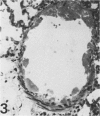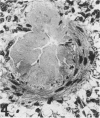Abstract
Terminal conducting airways are known to be vulnerable to direct injury by a variety of noxious aerosols. Sulfuric acid aerosol, a by-product of fossil fuel combustion, produces desquamation of terminal bronchiolar epithelium in guinea pigs that is believed to result from direct deep lung irritation, an effect separable from reflex airway constriction induced by sulfuric acid. To characterize desquamation of bronchiolar epithelium, 20 guinea pigs were exposed to 32.6 mg/cu m sulfuric acid aerosol with a mass median aerodynamic diameter of 1.0 micron for 4 hours. The guinea pigs were killed upon termination of the exposure, or 24 hours later, and airway alterations were evaluated by light and transmission electron microscopy. To test whether the development of bronchiolar epithelial desquamation is independent of reflex airway constriction, 24 guinea pigs were exposed to an identical aerosol for 4 hours after pretreating half with 5 mg/kg atropine sulfate intraperitoneally to inhibit airway constriction. Sulfuric acid produced diffuse pulmonary hyperinflation with areas of consolidation and atelectasis. Epithelial desquamation occurred in airways supplying regions of developing atelectasis and was most extensive in terminal bronchioles. Parasympathetic effector blockade with atropine eliminated epithelial desquamation. These results indicate that sulfuric acid-produced desquamation of terminal bronchiolar epithelium is not separable from reflex airway constriction and that terminal conducting airways are vulnerable not only to direct injury by noxious aerosols but also to indirect, reflex-mediated injury.
Full text
PDF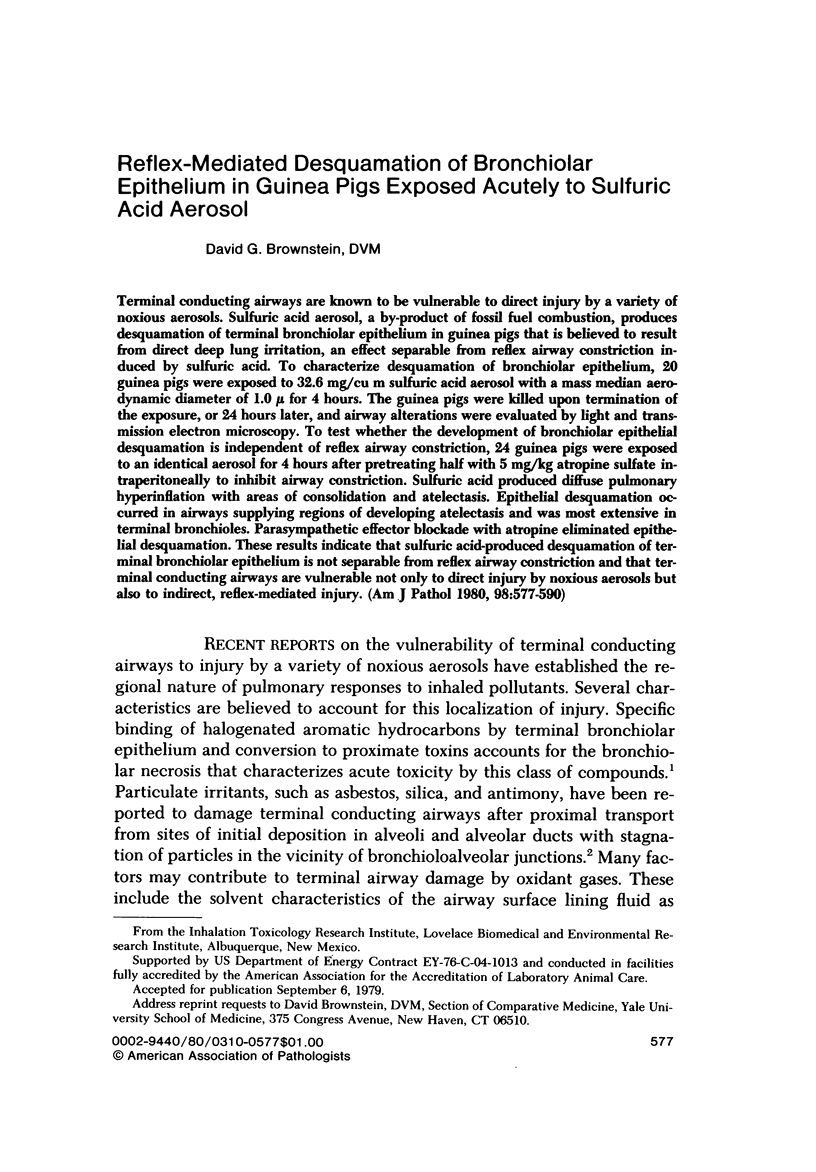
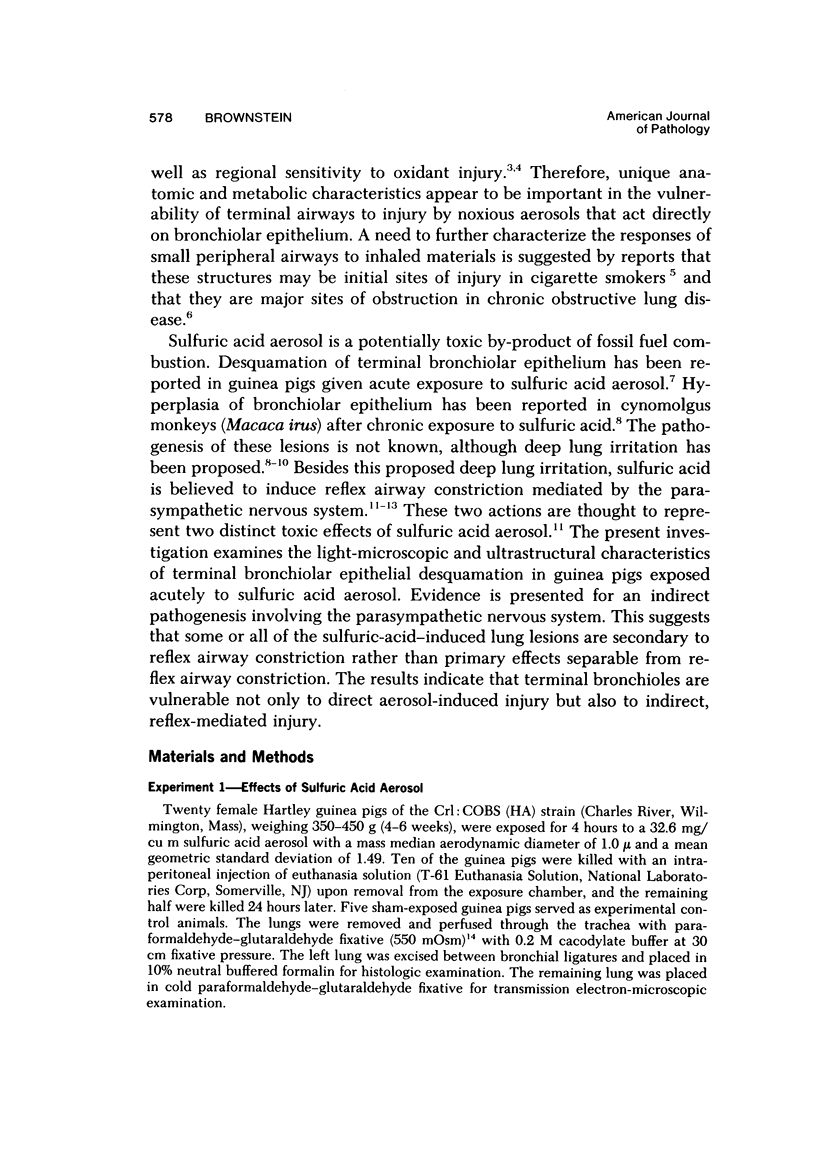
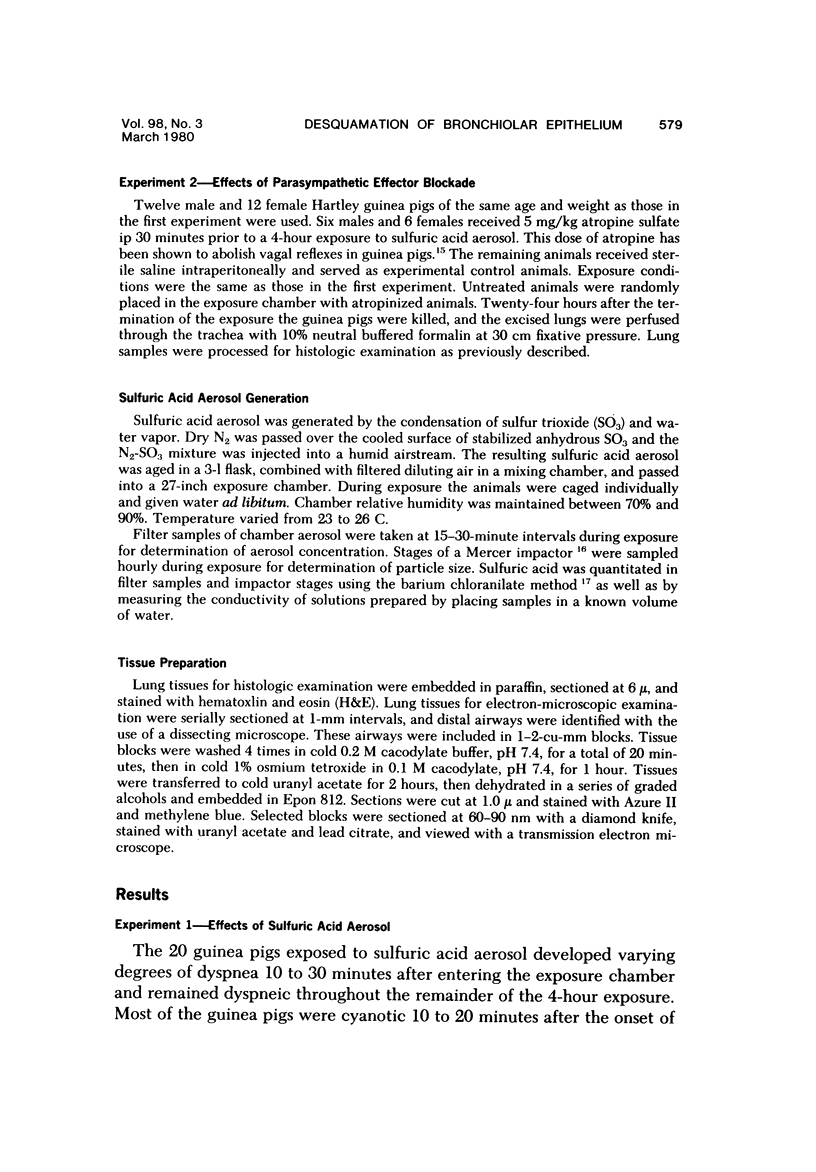
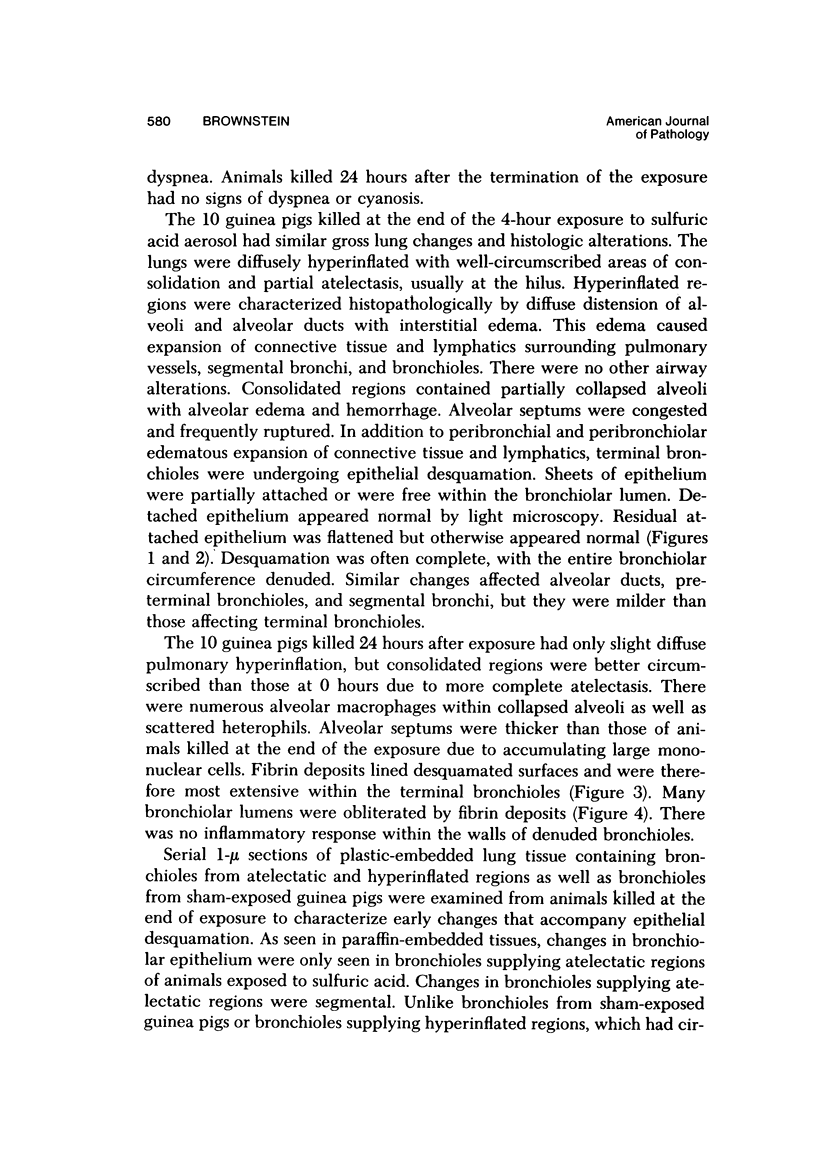
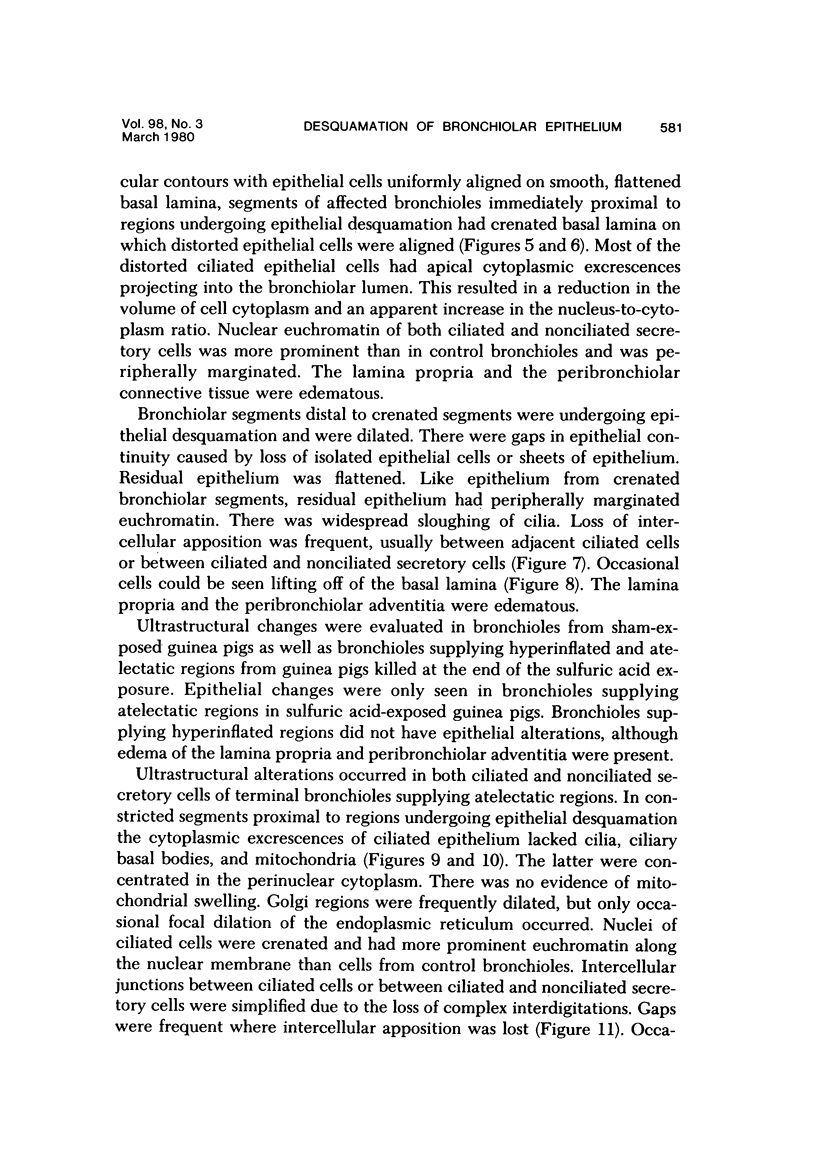
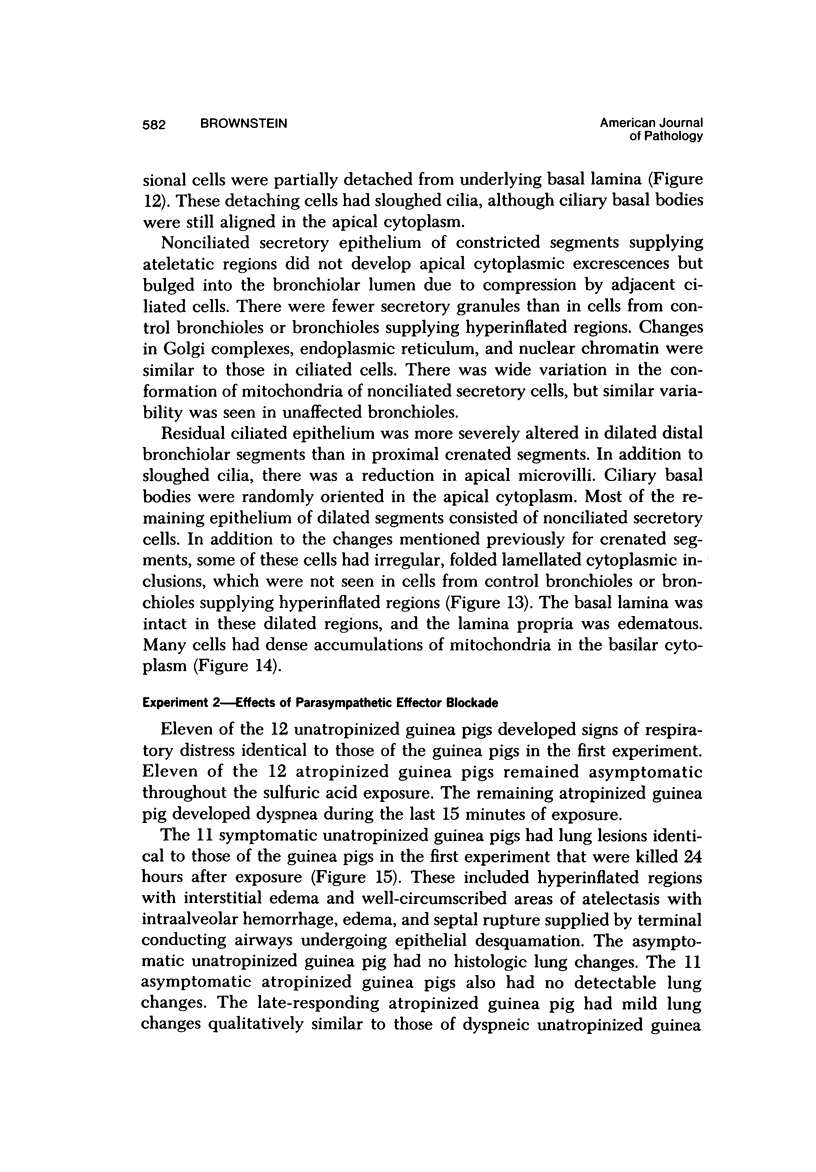
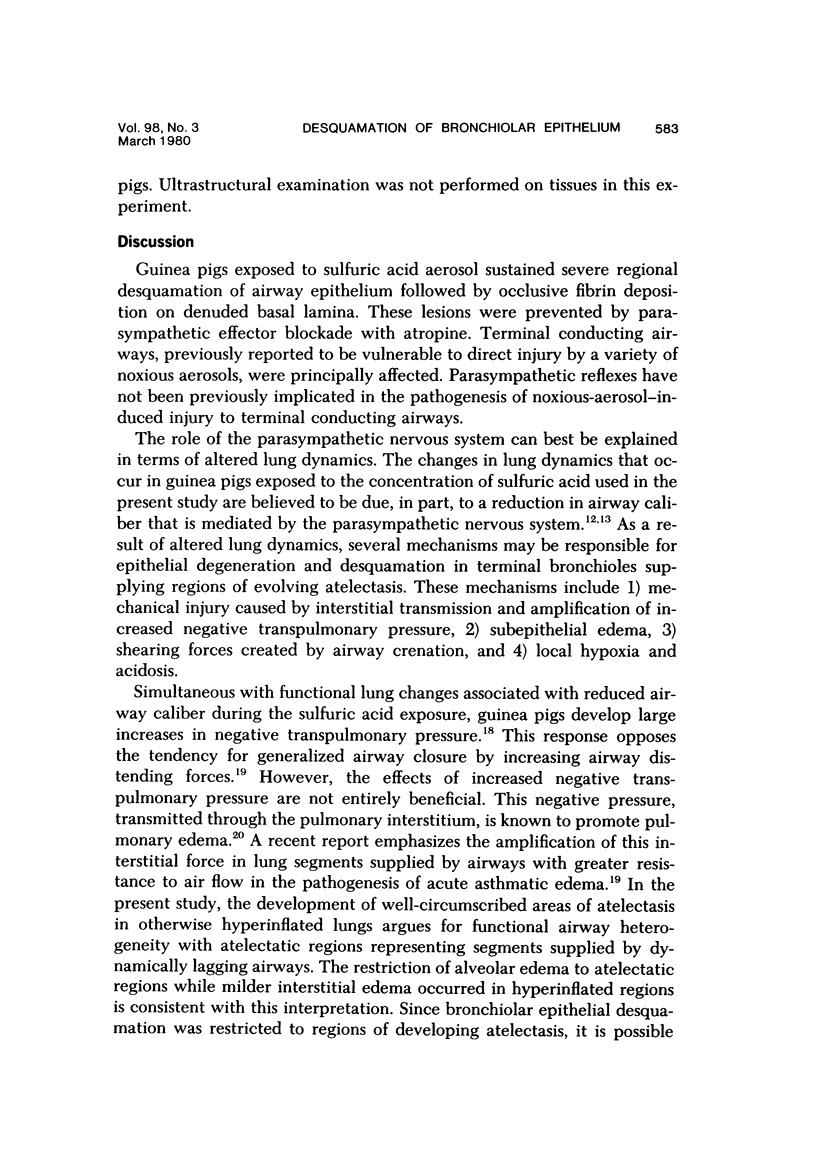
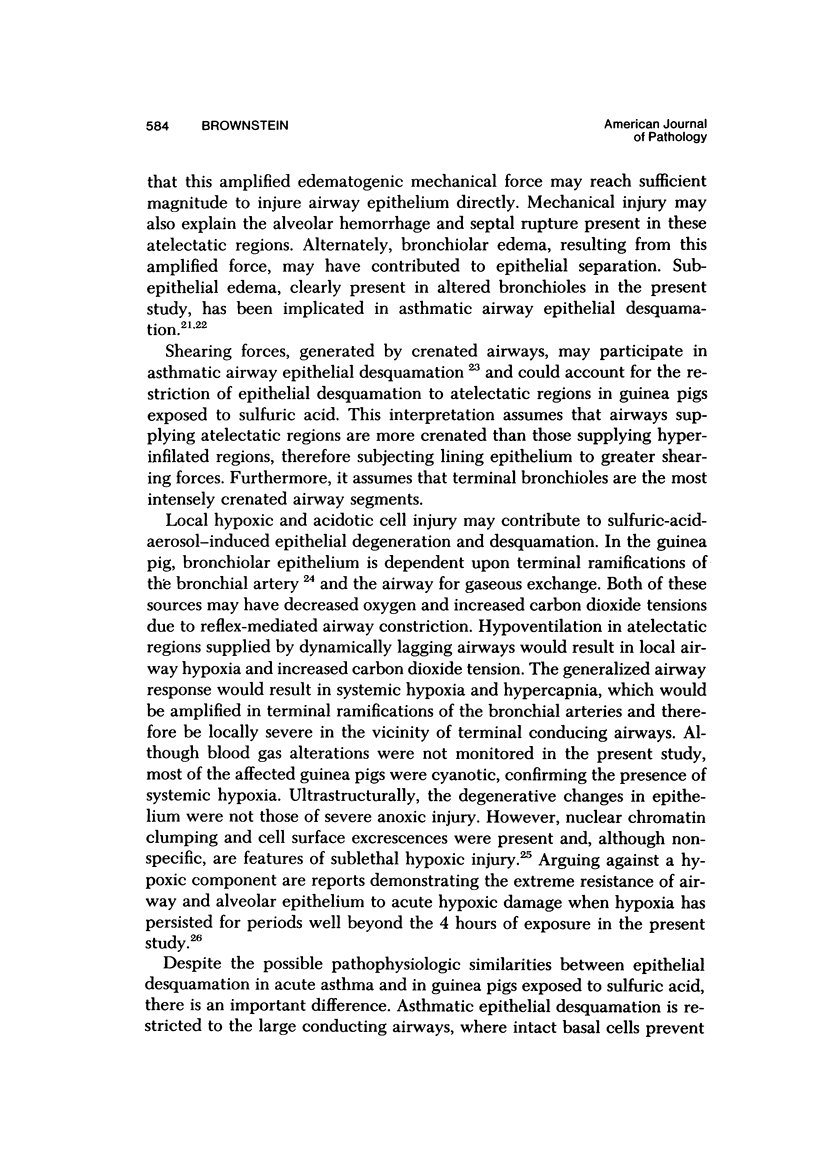
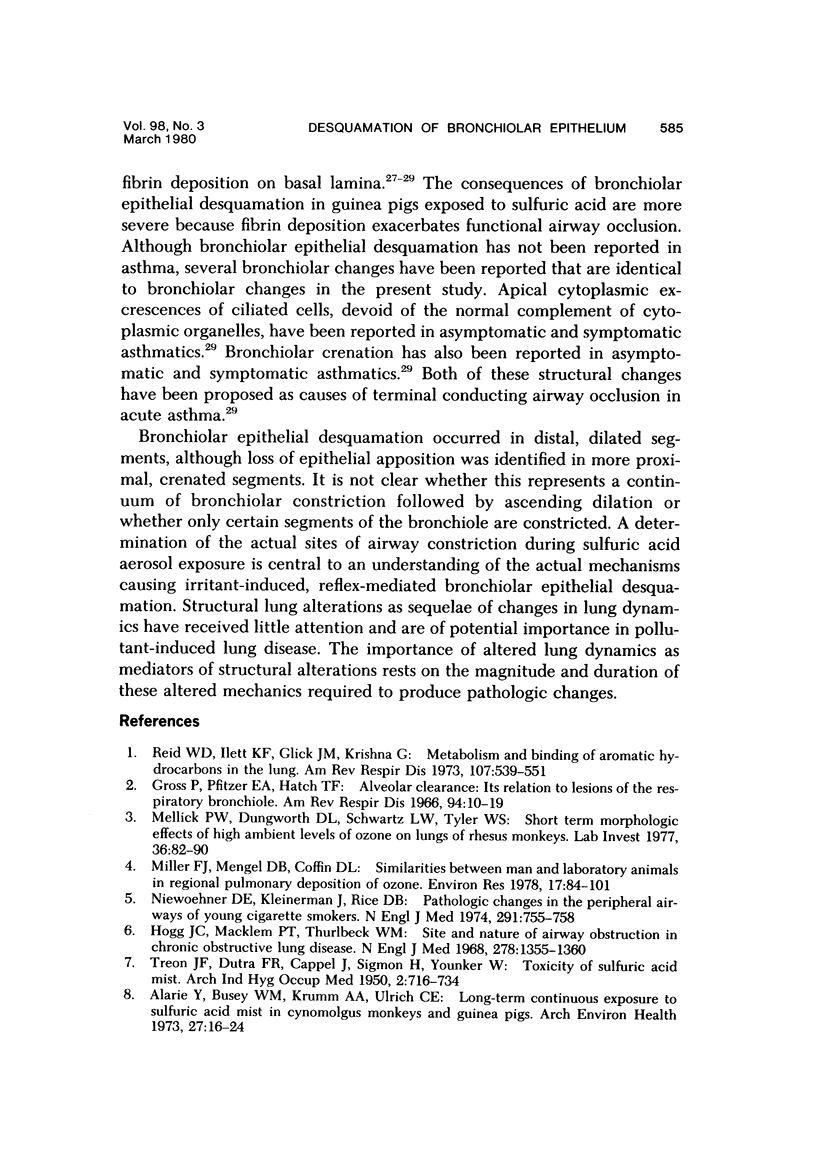
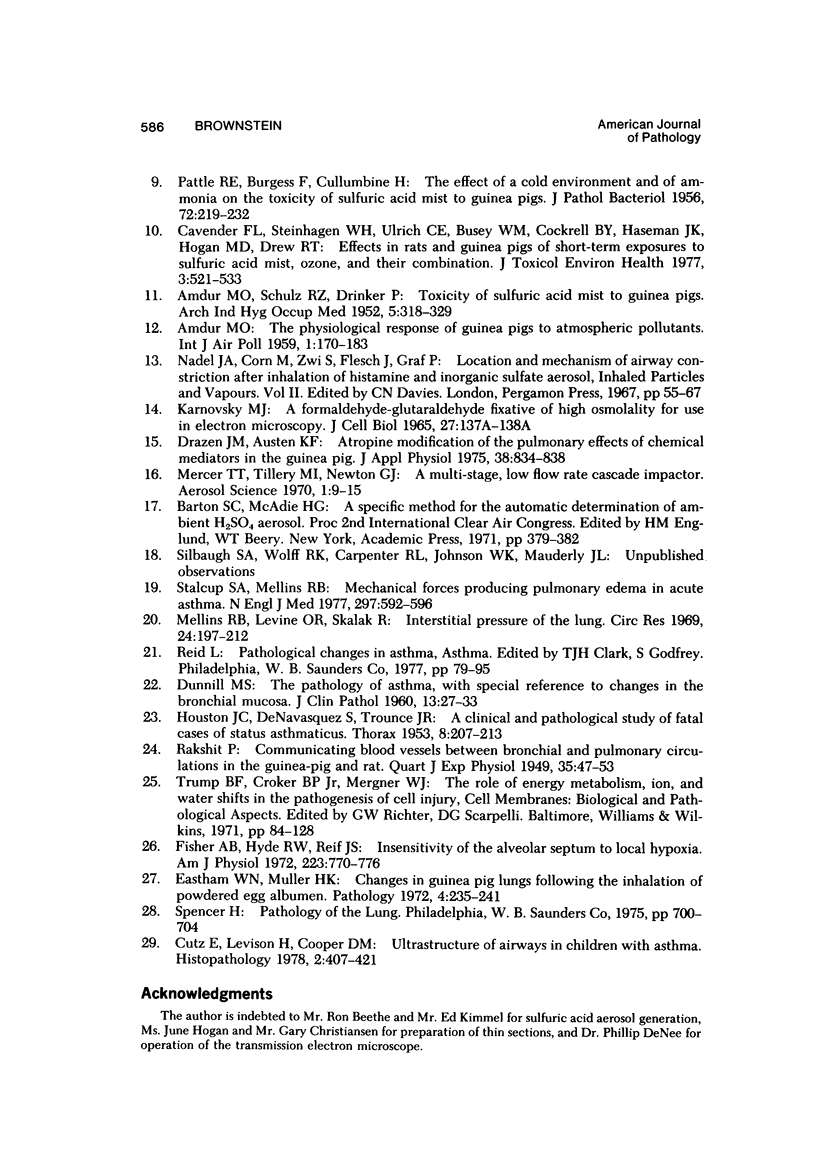
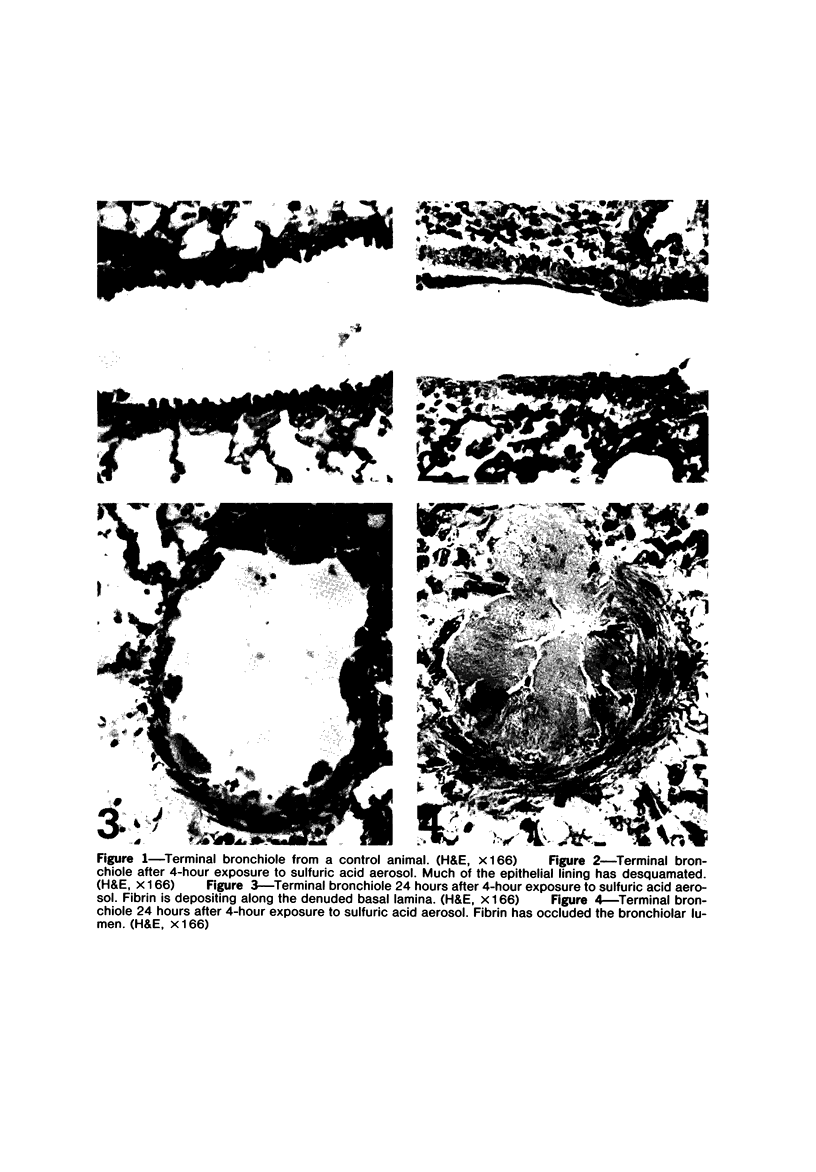
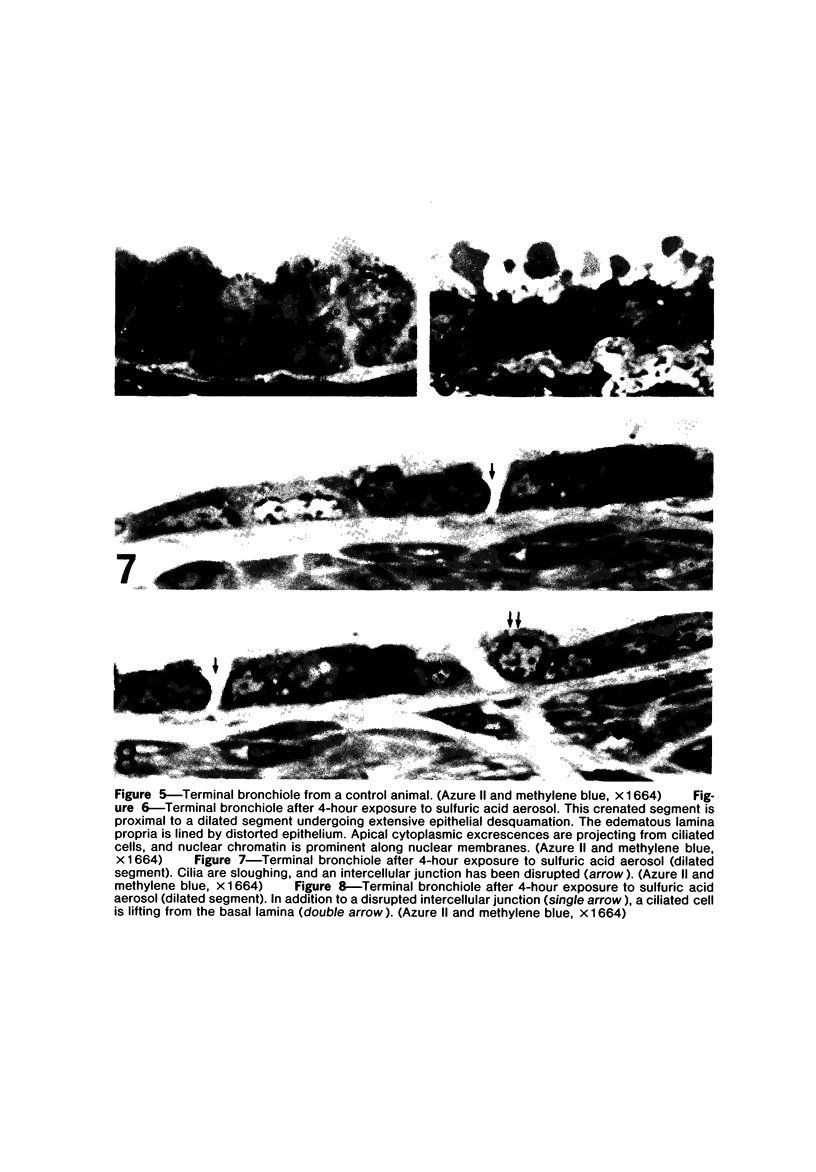
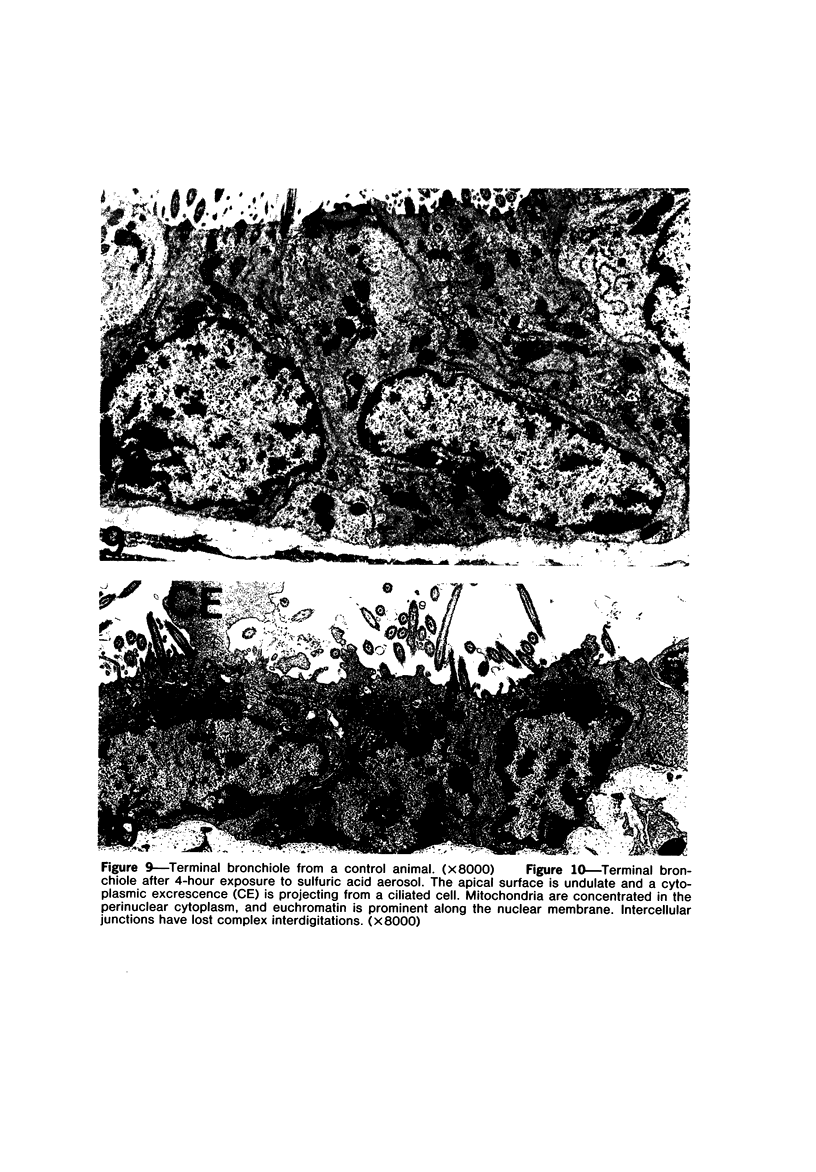
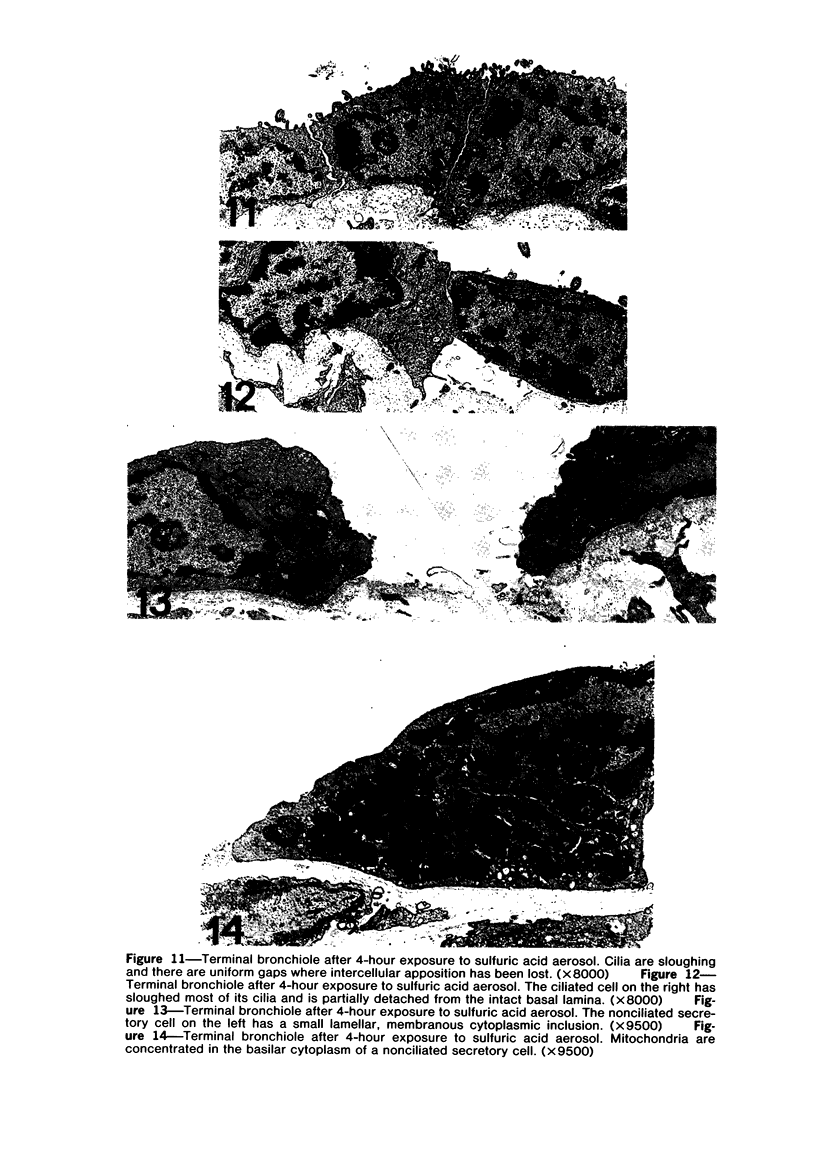
Images in this article
Selected References
These references are in PubMed. This may not be the complete list of references from this article.
- AMDUR M. O., SCHULZ R. Z., DRINKER P. Toxicity of sulfuric acid mist to guinea pigs. AMA Arch Ind Hyg Occup Med. 1952 Apr;5(4):318–329. [PubMed] [Google Scholar]
- AMDUR M. O. The physiological response of guinea pigs to atmospheric pollutants. Int J Air Pollut. 1959 Jan;1(3):170–183. [PubMed] [Google Scholar]
- Alarie Y., Busey W. M., Krumm A. A., Ulrich C. E. Long-term continuous exposure to sulfuric acid mist in cynomolgus monkeys and guinea pigs. Arch Environ Health. 1973 Jul;27(1):16–24. doi: 10.1080/00039896.1973.10666301. [DOI] [PubMed] [Google Scholar]
- BURGESS F., CULLUMBINE H., PATTLE R. E. The effects of a cold environment and of ammonia on the toxicity of sulphuric acid mist to guinea-pigs. J Pathol Bacteriol. 1956 Jul;72(1):219–232. doi: 10.1002/path.1700720128. [DOI] [PubMed] [Google Scholar]
- Cavender F. L., Steinhagen W. H., Ulrich C. E., Busey W. M., Cockrell B. Y., Haseman J. K., Hogan M. D., Drew R. T. Effects in rats and guinea pigs of short-term exposures to sulfuric acid mist, ozone, and their combination. J Toxicol Environ Health. 1977 Oct;3(3):521–533. doi: 10.1080/15287397709529584. [DOI] [PubMed] [Google Scholar]
- Cutz E., Levison H., Cooper D. M. Ultrastructure of airways in children with asthma. Histopathology. 1978 Nov;2(6):407–421. doi: 10.1111/j.1365-2559.1978.tb01735.x. [DOI] [PubMed] [Google Scholar]
- DUNNILL M. S. The pathology of asthma, with special reference to changes in the bronchial mucosa. J Clin Pathol. 1960 Jan;13:27–33. doi: 10.1136/jcp.13.1.27. [DOI] [PMC free article] [PubMed] [Google Scholar]
- Drazen J. M., Austen K. F. Atropine modification of the pulmonary effects of chemical mediators in the guinea pig. J Appl Physiol. 1975 May;38(5):834–838. doi: 10.1152/jappl.1975.38.5.834. [DOI] [PubMed] [Google Scholar]
- Eastham W. N., Muller H. K. Changes in guinea-pig lungs following the inhalation of powdered egg albumen. Pathology. 1972 Jul;4(3):235–241. doi: 10.3109/00313027209068946. [DOI] [PubMed] [Google Scholar]
- Fisher A. B., Hyde R. W., Reif J. S. Insensitivity of the alveolar septum to local hypoxia. Am J Physiol. 1972 Oct;223(4):770–776. doi: 10.1152/ajplegacy.1972.223.4.770. [DOI] [PubMed] [Google Scholar]
- Gross P., Pfitzer E. A., Hatch T. F. Alveolar clearance: its relation to lesions of the respiratory bronchiole. Am Rev Respir Dis. 1966 Jul;94(1):10–19. doi: 10.1164/arrd.1966.94.1.10. [DOI] [PubMed] [Google Scholar]
- HOUSTON J. C., DE NAVASQUEZ S., TROUNCE J. R. A clinical and pathological study of fatal cases of status asthmaticus. Thorax. 1953 Sep;8(3):207–213. doi: 10.1136/thx.8.3.207. [DOI] [PMC free article] [PubMed] [Google Scholar]
- Hogg J. C., Macklem P. T., Thurlbeck W. M. Site and nature of airway obstruction in chronic obstructive lung disease. N Engl J Med. 1968 Jun 20;278(25):1355–1360. doi: 10.1056/NEJM196806202782501. [DOI] [PubMed] [Google Scholar]
- Mellick P. W., Dungworth D. L., Schwartz L. W., Tyler W. S. Short term morphologic effects of high ambient levels of ozone on lungs of rhesus monkeys. Lab Invest. 1977 Jan;36(1):82–90. [PubMed] [Google Scholar]
- Mellins R. B., Levine O. R., Skalak R., Fishman A. P. Interstitial pressure of the lung. Circ Res. 1969 Feb;24(2):197–212. doi: 10.1161/01.res.24.2.197. [DOI] [PubMed] [Google Scholar]
- Miller F. J., Menzel D. B., Coffin D. L. Similarity between man and laboratory animals in regional pulmonary deposition of ozone. Environ Res. 1978 Aug;17(1):84–101. doi: 10.1016/0013-9351(78)90064-6. [DOI] [PubMed] [Google Scholar]
- Niewoehner D. E., Kleinerman J., Rice D. B. Pathologic changes in the peripheral airways of young cigarette smokers. N Engl J Med. 1974 Oct 10;291(15):755–758. doi: 10.1056/NEJM197410102911503. [DOI] [PubMed] [Google Scholar]
- Reid W. D., Ilett K. F., Glick J. M., Krishna G. Metabolism and binding of aromatic hydrocarbons in the lung. Relationship to experimental bronchiolar necrosis. Am Rev Respir Dis. 1973 Apr;107(4):539–551. doi: 10.1164/arrd.1973.107.4.539. [DOI] [PubMed] [Google Scholar]
- Stalcup S. A., Mellins R. B. Mechanical forces producing pulmonary edema in acute asthma. N Engl J Med. 1977 Sep 15;297(11):592–596. doi: 10.1056/NEJM197709152971107. [DOI] [PubMed] [Google Scholar]
- TREON J. F., DUTRA F. R., CAPPEL J., SIGMON H., YOUNKER W. Toxicity of sulfuric acid mist. AMA Arch Ind Hyg Occup Med. 1950 Dec;2(6):716–734. [PubMed] [Google Scholar]





